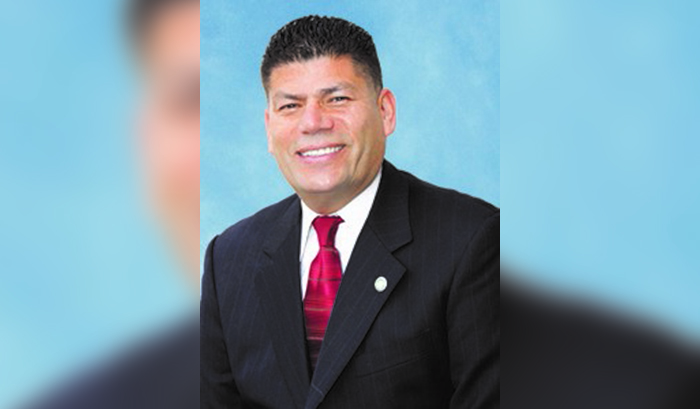Ivy hip and college-fresh, complementary chums since their Manhattan Beach schooldays, not many years ago, Greg Reitz and Steve Edwards could have been just returning from successful auditions for a revival of the old “Ozzie and Harriet “ television show.
A blend of tradition and modernity’s latest incarnation.
At a spare outdoor table in front of the trendy Conservatory for Coffee, Tea and Cocoa that caters to the youthful nearby studio crowd, Mr. Edwards and Mr. Reitz, both 35 years old, easily could have passed for rising studio executives or for frontline actors.
[img]43|left|||no_popup[/img]
From long ago schooldays, Steve Edwards, left, Greg Reitz, right.
Externally at least, they do not fit the villainous profile that hundreds of Culver City residents lately have come to associate with builders and other development types who are criss-crossing Culver City, seeking to gentrify or upgrade certain residential neighborhoods.
Trying Out a New Style
Instead, the green-oriented builder Mr. Reitz and the more pragmatic partner Mr. Edwards have dipped into the Hayden Tract where they have proposed a very green four-story rebuild of 8665 Hayden Pl., brimming with the fairly new concept of business condominiums.
Based on two recent meetings with neighbors, a small session and a double-large one, residents think the green is nice but not nearly nice enough to offset what they regard as an outsized structure for their settled, cozy neighborhood.
Don’t Mistake Flexibility
The building team is congenial enough and pliable, but the latter should not be mistaken for being wishy-washy. They know what they want, and they know how to proceed. Detail prone, they are thorough to a nuance. Interlacing each other’s strengths, they have carefully drawn a roadmap to their destination.
The sunny news is that both camps seem to feel liquid, kindly disposed toward each other. Not sounding like hardliners who recently have been in the news, both sides say they are committed to being good neighbors.
At the risk of positioning a horse north of a cart, the gentlemen who several years ago formed REthink Development of Culver City (rethinkdev.com), complete with green business cards, still are some weeks from even filing their application documents with City Hall.
Maintaining Perspective
Neighborhood outreach has become the battlecry of numerous Culver City residents who seem permanently prepared to contest any rebuild proposals entering their space.
While Mr. Edwards and Mr. Reitz say firmly that they are business-oriented, and that public relations/outreach is a subsidiary not an equal partner, they are clearly outreach-conscious.
If 8665 comes out the way they are envisioning, the hook for selling individual units will be unique.
“Business condos is a fairly new concept,” says Mr. Edwards. “It has been done in Orange County, San Francisco quite a bit, Washington, D.C. What we are doing is giving an opportunity to smaller businesses, which is appropriate in a small, creative community like Culver City. They will have a chance to own, to control their own destiny instead of being tied to the rapid rate increases that are coming on the Westside.”
Q. What kind of businesses are Mr. Reitz and Mr. Edwards targeting?
“For this project,” said Mr. Edwards, “we are partnering with an architecture firm. We found the site with them because they wanted to move from Marina del Rey. They are designing the building, and they are going to take about 12,000 square feet of the building. They are designing a couple of our other projects, one in Culver City as well.
“Companies like that. Architecture firms. Our mechanical engineers we have worked with in the past, they are going to buy a space in there. Also the PR firm that represents them. A structural engineering firm. Some design-oriented firms, and the more creative services companies, from smaller production companies to web kind of digital companies.”
Q. What do these businesses have in common?
“Largely, I would say size,” said Mr. Edwards. “About 10 to 40 people. Kind of workforce. All college-educated, usually with additional graduate degrees. Care about where they live. Care about the environment. Probably pretty socially moderate and creative.”
Mr. Reitz spoke up for the first time. “A lot of creative industry types,” he said. “All knowledge workers, people who use their minds in their work rather than laborers.”
Q. Nineteen business condos, right?
“The number has not been determined yet,” Mr. Edwards said. “We are going to build a shell. Then we will go out and see what size people really want. We are hoping to sell to as few owners as possible. But it will really be determined by what kind of people are out there trying to buy space when we turn the building over. We hope to be ready by early 2010.”
Q. What were your impressions of the most recent meeting with neighbors?
“I felt like all the people who spoke had concerns about the project,” Mr. Reitz said. ‘They were not unreasonable concerns. I understand where they are coming from, about the height of the project, the size of the project, and the number of parking spots. We do understand all of that. We wanted to hear what their specific concerns were so we could address them in the best way possible.
Honorable Behavior
“It was a good meeting,” and Mr. Reitz chuckled before adding, “they were all well behaved. Nice people. But you would expect that from Culver City residents,” where the builder himself lives.
“What I was surprised about was that there were a few people in the audience who did not speak during the meeting, but they came around afterward. They talked to our architect in particular. They said they actually liked the project, and they were glad to see it there.
Discretion Was Prudent
“They probably were rightly concerned about speaking up during the meeting. I think a couple of people would have chastised them if they had said anything positive.”
Mr. Edwards has detected a pattern in the two neighborhood meetings. “The vocal ones at the meetings are the people who really don’t like it,” he said. “The people who think it’s pretty cool just don’t say anything. It was actually nice to hear from those people afterward instead of just walking out the door and presuming that everybody doesn’t like it.”
(To be continued)






